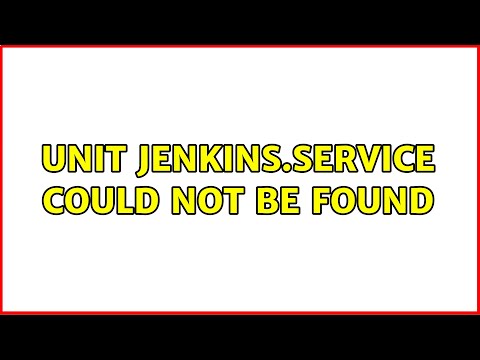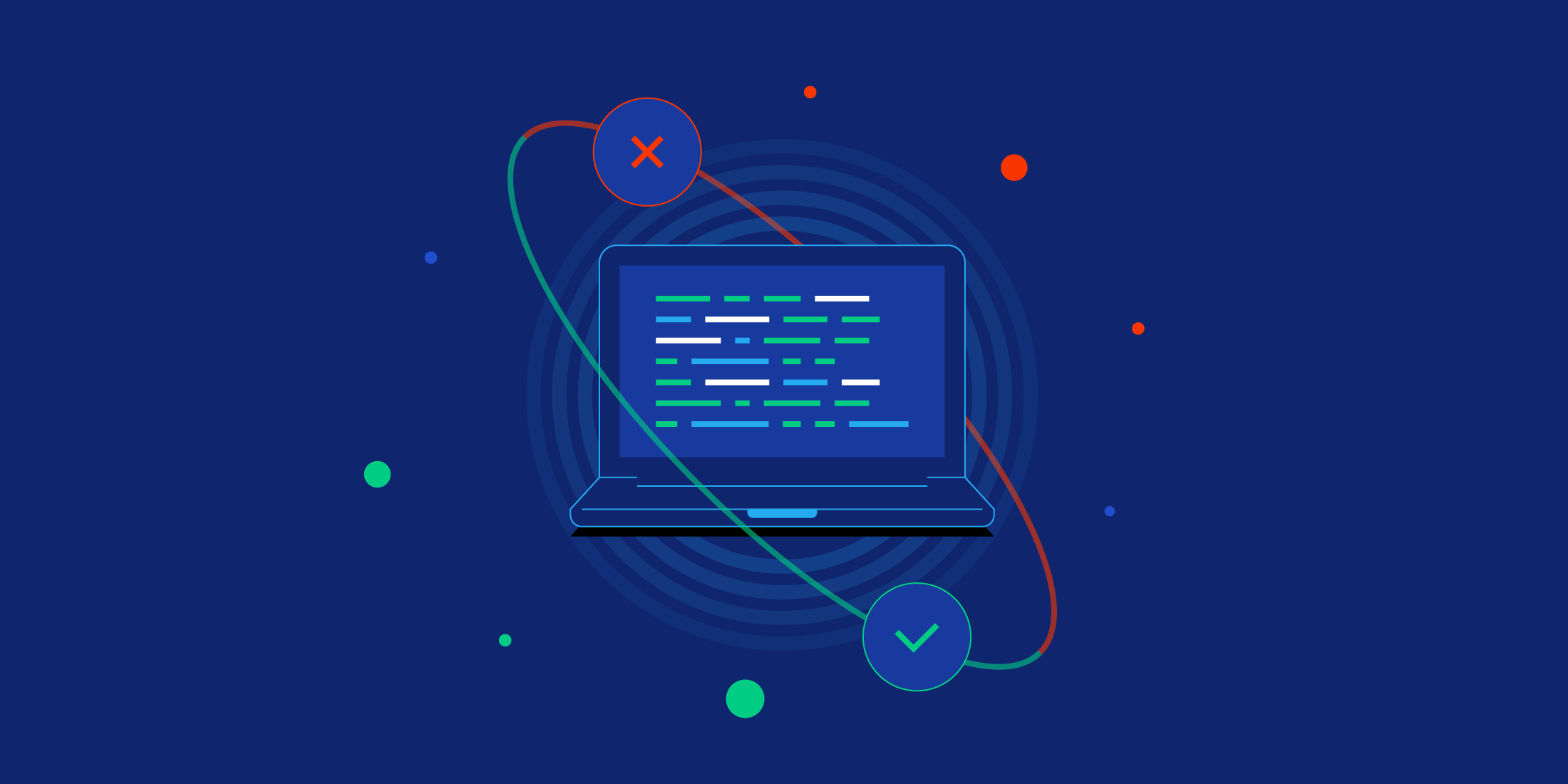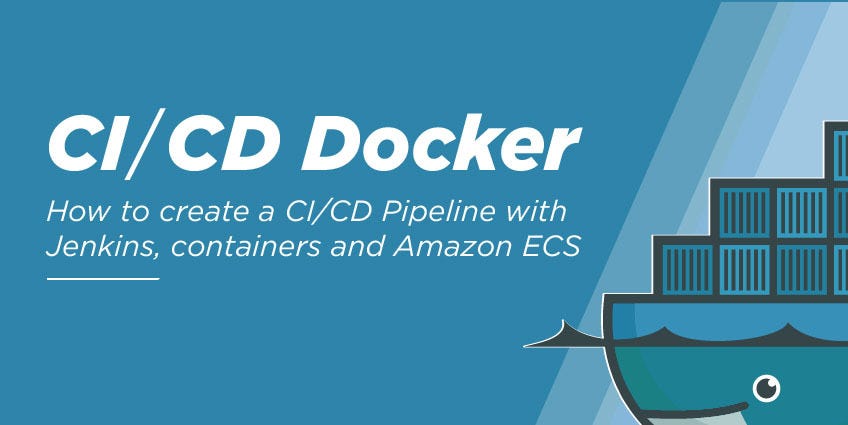Unit Jenkins.Service Could Not Be Found
Jenkins is an open-source automation server widely used for continuous integration and continuous delivery (CI/CD) processes. It allows developers to automate the building, testing, and deployment of software applications, providing a reliable and efficient workflow.
The Jenkins service acts as the backend engine that powers the Jenkins server. It is responsible for managing and executing the jobs and tasks defined in the Jenkins environment. When the “unit jenkins.service could not be found” error occurs, it indicates that the Jenkins service is unable to start or has encountered an issue.
Causes of “unit jenkins.service could not be found” Error
There can be various causes for the “unit jenkins.service could not be found” error. These include:
1. Misconfigured or missing Jenkins installation: If Jenkins is not installed correctly or if there are issues with the installation files, it can result in the service not being found.
2. Incorrect Systemd initialization and configuration: Systemd is a system and service manager commonly used in modern Linux distributions. Improper configuration or initialization of Systemd can prevent the Jenkins service from being located.
3. Unregistered Jenkins service: In some cases, the Jenkins service may not be properly registered with the system, leading to the error.
4. Permissions and ownership issues: Insufficient permissions or incorrect ownership of the Jenkins service files and directories can prevent the system from locating the service.
Troubleshooting Steps to Resolve the Error
To resolve the “unit jenkins.service could not be found” error, follow these troubleshooting steps:
a. Verifying Jenkins Installation and Configuration:
– Ensure that Jenkins is installed correctly and all required dependencies are met.
– Double-check the installation paths and configuration files for any discrepancies or errors.
b. Checking Systemd Initialization and Configuration:
– Verify that Systemd is properly initialized and running on the system.
– Review the Systemd unit file for the Jenkins service and ensure it is correctly configured.
c. Ensuring Jenkins Service is Registered:
– Check if the Jenkins service is registered with the system.
– If not, register the service using appropriate commands or tools specific to your operating system.
d. Verifying Jenkins Service Permissions and Ownership:
– Ensure that the Jenkins service files and directories have the correct permissions and ownership.
– Grant necessary permissions to the Jenkins service user or group as required.
Advanced Troubleshooting Techniques
If the above steps do not resolve the issue, consider trying these advanced troubleshooting techniques:
a. Examining System Logs for Insights:
– Check system logs for any error messages or clues that can help identify the cause of the issue.
– Look for any specific error codes or messages related to the Jenkins service.
b. Investigating Jenkins Service Dependencies:
– Review and assess the dependencies of the Jenkins service.
– Check if all required packages, libraries, or plugins are installed and up to date.
c. Analyzing Jenkins and System Resource Availability:
– Monitor system resource usage, such as CPU, memory, and disk space, during the Jenkins service startup.
– Ensure that there are no resource constraints impacting the availability of the Jenkins service.
d. Testing Jenkins Service Startup and Reloading Mechanisms:
– Experiment with starting, stopping, and reloading the Jenkins service while monitoring system behavior.
– Validate if the service starts and stops correctly without encountering the error.
Common Pitfalls and Potential Solutions
Here are some common pitfalls related to the “unit jenkins.service could not be found” error and their potential solutions:
a. Resolving File Path or Symbolic Link Issues:
– Double-check file paths and symbolic links associated with the Jenkins service.
– Ensure that the paths are correctly set and accessible.
b. Dealing with Incompatible Jenkins Versions or Plugins:
– Verify that the installed Jenkins version and any associated plugins are compatible.
– Update or downgrade as necessary to maintain compatibility.
c. Addressing Limited Server Resources or User Permissions:
– Investigate if the server has insufficient resources to run the Jenkins service.
– Consider optimizing resource allocation or upgrading hardware if needed.
– Review user permissions and ensure they have sufficient privileges to access and run the Jenkins service.
d. Ensuring Proper Network Connectivity and Firewall Configuration:
– Confirm that the Jenkins server has proper network connectivity.
– Check firewall settings and ensure that necessary ports are open for communication.
Additional Resources for Further Assistance
If you need further assistance, consider referring to these additional resources:
a. Reference Links to Official Jenkins Documentation:
– Jenkins documentation provides detailed information about installation, configuration, and troubleshooting.
– Explore official documentation for a comprehensive understanding of Jenkins and its functionalities.
b. Relevant Community Forums and Support Channels:
– Participate in community forums or mailing lists specific to Jenkins.
– Seek help from experienced users or developers who have encountered similar issues.
c. Recommended Tools for System Monitoring and Diagnostic:
– Utilize monitoring and diagnostic tools to assess system health, resource usage, and performance.
– Tools like Nagios, Zabbix, or Prometheus can provide insights into system metrics and potential issues.
Best Practices to Prevent “unit jenkins.service could not be found”
To prevent the occurrence of the “unit jenkins.service could not be found” error, consider following these best practices:
a. Regularly Updating Jenkins and Related Components:
– Keep Jenkins and its associated components, such as plugins and libraries, up to date.
– The latest updates often include bug fixes and improvements that can prevent the error.
b. Monitoring System Health and Maintenance:
– Implement system monitoring practices to identify issues or potential problems.
– Regularly perform system maintenance activities, such as disk cleanup or optimization, to ensure optimal performance.
c. Backup and Restore Procedures for Jenkins Configuration:
– Establish a backup and restore mechanism for the Jenkins configuration.
– Regularly back up critical configuration files to minimize the impact of any failures or errors.
d. Collaboration and Communication with Jenkins Users and Developers:
– Foster an environment of collaboration and communication among Jenkins users and developers.
– Encourage sharing of knowledge, experiences, and solutions related to Jenkins service issues.
In Conclusion,
The “unit jenkins.service could not be found” error can be frustrating, but with the troubleshooting steps outlined in this article, you can effectively resolve the issue and get your Jenkins service up and running smoothly. By understanding the causes, following best practices, and leveraging additional resources, you can prevent this error and maintain a reliable CI/CD environment. Stay proactive in monitoring system health and seek assistance from the Jenkins community whenever needed.
Unit Jenkins.Service Could Not Be Found
Keywords searched by users: unit jenkins.service could not be found Failed to start jenkins Continuous Integration Server CentOS 7, job for jenkins.service failed because the control process exited with error code, Jenkins service holdoff time over, scheduling restart, Install Jenkins CentOS 7, Public key for jenkins is not installed, Install Jenkins CentOS 8, Centos 7 jenkins, Uninstall jenkins ubuntu
Categories: Top 22 Unit Jenkins.Service Could Not Be Found
See more here: nhanvietluanvan.com
Failed To Start Jenkins Continuous Integration Server Centos 7
Jenkins is an open-source automation tool primarily used for continuous integration and delivery of applications. It provides a robust and flexible platform to build, test, and deploy software projects. However, like any software, Jenkins can encounter issues, and one of the common problems users face is the failure to start the server on CentOS 7. In this article, we will delve into the possible causes behind this failure and provide solutions to troubleshoot and resolve the issue.
Why does Jenkins fail to start on CentOS 7?
There can be numerous reasons for the failure of Jenkins to start on CentOS 7. Some of the common causes include:
1. Java JDK/JRE compatibility: Jenkins requires Java Development Kit (JDK) or Java Runtime Environment (JRE) to run. One of the leading causes of Jenkins startup failure is the incompatibility between the installed JDK/JRE version and Jenkins’ requirements.
2. Insufficient system resources: Jenkins requires a certain amount of system resources, including memory, to run smoothly. If your CentOS 7 machine does not meet the minimum hardware requirements, such as available RAM, the server might fail to start.
3. Firewall or network configurations: Incorrect firewall or network configurations can impede the communication between Jenkins and its dependencies, leading to startup failures. It is crucial to ensure that the necessary network ports are open and the firewall rules allow communication with Jenkins.
4. Improper Jenkins installation or configuration: If Jenkins is not installed correctly or configured improperly, it may result in startup failures. This includes incorrect file permissions, misconfigured plugins, or missing dependencies.
Troubleshooting Jenkins startup failure on CentOS 7:
Now that we have explored the potential causes, let’s discuss troubleshooting steps to resolve the Jenkins startup failure issue.
1. Verify Java installation: Ensure that JDK/JRE is installed correctly and is compatible with Jenkins. You can check the Java version by running the “java -version” command in the terminal. If the installed version is incompatible, install the required version and update the system environment variables to use the correct Java version.
2. Check system resource availability: Confirm whether your CentOS 7 machine meets the minimum system requirements for Jenkins. Insufficient memory allocation can cause Jenkins to fail during startup. If necessary, increase the available system resources or consider upgrading your machine.
3. Review firewall and network configurations: Ensure that the necessary ports are open and the firewall allows inbound/outbound connections for Jenkins. The default port used by Jenkins is 8080, but you can verify and modify it in the Jenkins configuration files. Additionally, validate that the CentOS 7 machine has a stable network connection.
4. Examine Jenkins installation and configuration: Check the installation and configuration of Jenkins to identify any errors. Validate file permissions, plugin compatibility, and dependencies. If any issues arise, reinstall Jenkins or restore from a backup if available.
FAQs:
Q1. Can I use OpenJDK instead of Oracle JDK for Jenkins on CentOS 7?
A1. Yes, Jenkins is compatible with both OpenJDK and Oracle JDK. Ensure that you have the correct version of the JDK installed and update the Java environment variables accordingly.
Q2. How can I change the default port for Jenkins on CentOS 7?
A2. To modify the default port, navigate to the Jenkins configuration file located at “/etc/sysconfig/jenkins” and search for the “JENKINS_PORT” variable. Update the port number according to your preference and restart the Jenkins service for the changes to take effect.
Q3. What steps should I take if none of the troubleshooting steps resolve the issue?
A3. If none of the previous steps resolve the Jenkins startup failure, consider checking the Jenkins logs located in the “/var/log/jenkins” directory. The logs might contain specific error messages that can help identify the underlying cause. Additionally, consult the Jenkins community or forums for further assistance.
In conclusion, Jenkins is a powerful tool for continuous integration, but sometimes it may fail to start on CentOS 7. By understanding the potential causes and following the troubleshooting steps, you can resolve the issue and ensure a smooth operation of your Jenkins server. Always stay updated with the latest Jenkins version and maintain proper system configurations to avoid startup failures in the future.
Job For Jenkins.Service Failed Because The Control Process Exited With Error Code
In today’s fast-paced and highly technology-driven world, organizations rely heavily on automation to streamline their operations. One popular automation tool used by many is Jenkins, an open-source automation server that allows for continuous integration and delivery of software projects. However, like any software, Jenkins can encounter issues that may result in failures. One common error is the “job for jenkins.service failed because the control process exited with error code.”
What Does the Error Mean?
When Jenkins encounters the error message “job for jenkins.service failed because the control process exited with error code,” it means that something went wrong during the control process of starting or stopping the Jenkins service. The control process could not successfully complete its operation due to an error, leading to a failed service.
Causes of the Error
There can be various causes for this error message. Some of the common reasons are:
1. Misconfigured Jenkins installation: This error can occur if Jenkins is not correctly configured or if there are any configuration conflicts within the system.
2. Insufficient system resources: Jenkins requires a certain amount of system resources to function properly. If the system does not meet the minimum requirements or lacks the necessary resources, this error can occur.
3. Conflicting dependencies: Jenkins may encounter conflicts with other software dependencies installed on the system. These conflicts can prevent the control process from executing successfully.
4. Issues with the Jenkins service script: The error can also be a result of issues within the Jenkins service script itself. Problems such as incorrect permissions, missing or corrupted files can cause the control process to fail.
Troubleshooting the Error
When encountering the “job for jenkins.service failed because the control process exited with error code” error, there are a few troubleshooting steps you can follow to resolve the issue:
1. Check the Jenkins logs: The first step is to examine the Jenkins logs for any error messages or additional information that may shed light on the cause of the error. The logs can be found in the installation directory of Jenkins.
2. Verify system requirements: Make sure that your system meets the minimum requirements specified by Jenkins. Ensure that there is sufficient memory, disk space, and processing power available for Jenkins to run smoothly.
3. Restart the Jenkins service: Sometimes, a simple restart of the Jenkins service can resolve the issue. Use the command specific to your operating system to restart the service. For example, on Linux, use “systemctl restart jenkins” command.
4. Check for conflicting dependencies: Look for any conflicting dependencies that might be causing issues with the Jenkins service. Ensure that all dependencies are installed correctly and are compatible with your Jenkins version.
5. Reinstall Jenkins: If the above steps do not resolve the error, you may consider reinstalling Jenkins. Uninstall the current installation and then reinstall the latest version, following the official Jenkins documentation on the installation process.
FAQs
1. Can I ignore the “job for jenkins.service failed because the control process exited with error code” error?
It is not recommended to ignore this error, as it signifies a problem within the Jenkins service. Ignoring the error can lead to further complications and hinder your automation processes.
2. How can I identify the specific cause of the error?
Examining the Jenkins logs is the best way to identify the root cause of the error. The logs often contain valuable information about the error, allowing you to troubleshoot and resolve it effectively.
3. Will reinstalling Jenkins delete my existing configurations and jobs?
Reinstalling Jenkins should not delete your existing configurations and jobs, but it is always recommended to back up your data before proceeding with any major changes. This ensures that your configurations, plugins, and jobs are safely preserved.
4. What should I do if the error persists even after following the troubleshooting steps?
If the error persists despite your best efforts, reaching out to the Jenkins community or support forums is recommended. Other users and developers can provide insights and potential solutions based on their experiences.
In conclusion, encountering the “job for jenkins.service failed because the control process exited with error code” error can be frustrating, but it is not uncommon. By following the troubleshooting steps outlined in this article and seeking assistance when needed, you can overcome this error and ensure the smooth functioning of your Jenkins automation server. Remember to always stay up to date with the latest Jenkins updates and best practices to minimize the occurrence of such errors.
Images related to the topic unit jenkins.service could not be found

Found 32 images related to unit jenkins.service could not be found theme








Article link: unit jenkins.service could not be found.
Learn more about the topic unit jenkins.service could not be found.